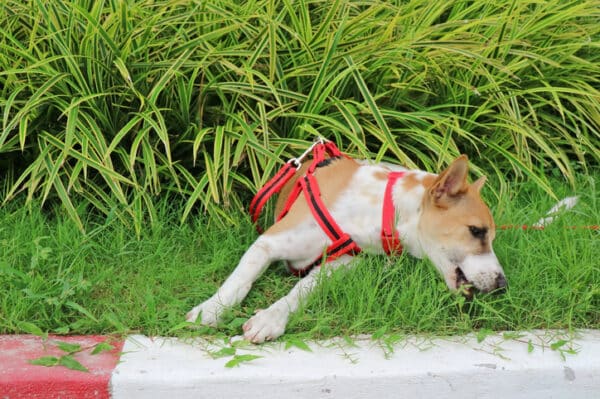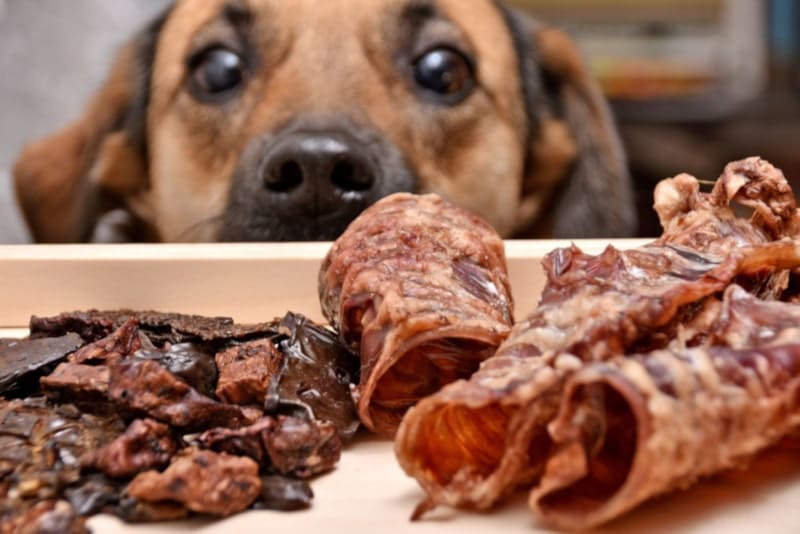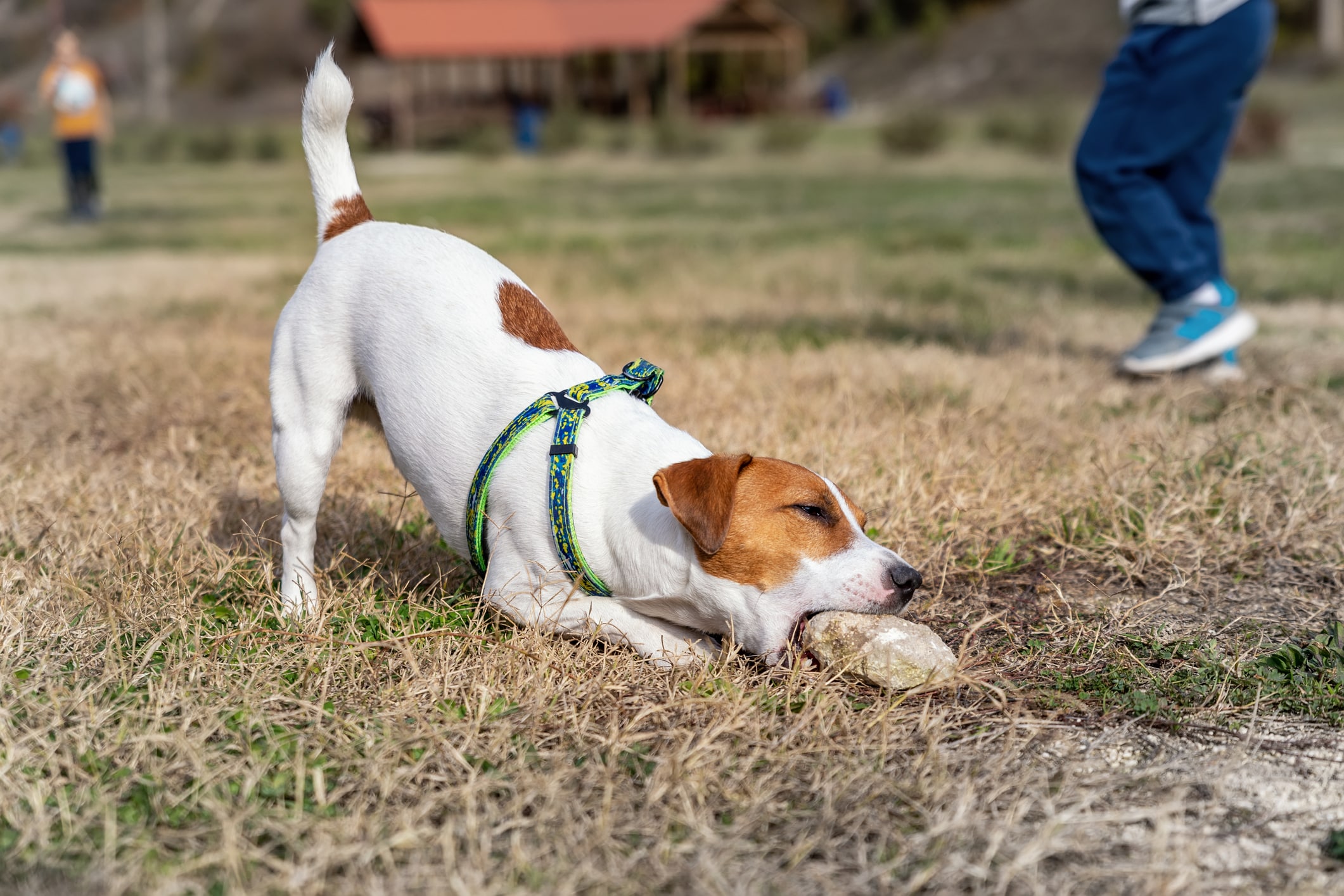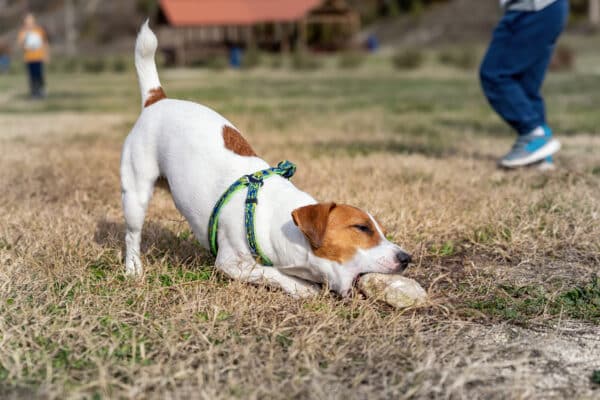My dog, Sasha, loves to eat. She always knows when it’s time for breakfast or dinner, and when we’re running late serving her meal she’s quick to remind us. She also loves to eat things she’s not supposed to eat — namely, paper. Sasha is an Australian Shepherd/Border Collie mix who eats cardboard, milk cartons, our mail, even a cookbook signed by the author. She turns her nose up at newsprint, but anything else paper-related is fair game.
Sasha is not the only dog I know who eats things that aren’t food. My friend’s Goldendoodle, Raffi, has a far more expansive palate. Raffi has been known to eat clothing, eyeglass frames, shoes, many pairs of earbuds, and even a bicycle saddle.
There’s a word for this syndrome — pica. There are two main reasons why grown dogs eat items that aren’t food: physical and behavioral. The physical reasons consist of the dog’s diet lacking certain nutrients or diseases such as digestive disorders and parasitic infections; also poisoning. If your dog is eating inedible things, see your veterinarian first to rule out any physical causes for pica.
The behavioral reasons are usually because when a dog is bored, he or she will seek out non-food items to consume. This is called “compulsive pica.” The most common things dogs with compulsive pica eat are rocks, plastic bags and containers, clothing, and wooden objects.

Compulsive pica does not apply to puppies, who are naturally curious and explore the world through their mouths. Fortunately, with a little discouragement from their caretakers, puppies grow out of this behavior by the time they’re one year old.
According to the American Society for the Prevention of Cruelty to Animals (ASPCA), compulsive behavior won’t go away on its own. Special training is required to curb this potentially dangerous behavior. Pica can be a serious problem because items such as rubber bands, socks, rocks, and string can severely damage or block your dog’s intestines.
Marthina McClay, a certified dog trainer at Dog Training for People, has worked with rescue dogs with this condition. She says that once she rules out any medical causes or nutritional deficiencies, she stocks up on hard chew toys that cannot break off easily, such as Nylabones, to keep her dogs busy and keep compulsive pica at bay. “It’s usually boredom and too much space to do crazy things in while bored,” she says.
McClay also recommends being proactive in curbing the behavior by engaging your dog in activities that are fun and rewarding. Tug games and sports such as agility can be a fun way for your dog to burn off steam and reduce boredom. Crating your dog when you’re away from home is another measure to safeguard your dog from eating the wrong things when you’re away.
Another strategy to make inedible objects less appealing is to spray taste deterrents on those things your dog is most likely to eat. Products such as Bitter Apple or Bitter YUCK! can be purchased at most pet supply stores. The ASPCA suggests that when first using a deterrent, apply a small amount to a piece of tissue and place it directly into your dog’s mouth. Allow your dog to taste it and then spit it out. See if your dog reacts and finds the taste unpleasant. If so, your dog will begin to associate the smell with unfavorable things. Spray the non-food objects that he or she usually eats and reapply the deterrent every day for two to four weeks to reinforce the avoidance behavior.

To stop our dog from eating paper, we bought a kibble dispenser to give her more mental stimulation and give her a job to do, since she’s a mix of working dog breeds. Busy Buddy and StarMark both make kibble dispensers that are sturdy and long-lasting. We also are now in the habit of keeping temptation away from her by piling the mail or any important documents out of her reach. In other words, we modified our behavior.
How about you? Does your dog eat things he or she shouldn’t? Tell me in comments!
Read more on dogs eating things they shouldn’t:
- How I Got My Dog to Stop Eating Poop
- Can Dogs Eating Chocolate Cause Long-Term Health Problems?
- Barney the Dog Eats 109 Pebbles at the Beach
- Is it Safe for Dogs to Eat Grass? Let Me Tell You a Fairly Disgusting but True Story
Featured Image Credit: Kyryl Gorlov/ Getty Images









